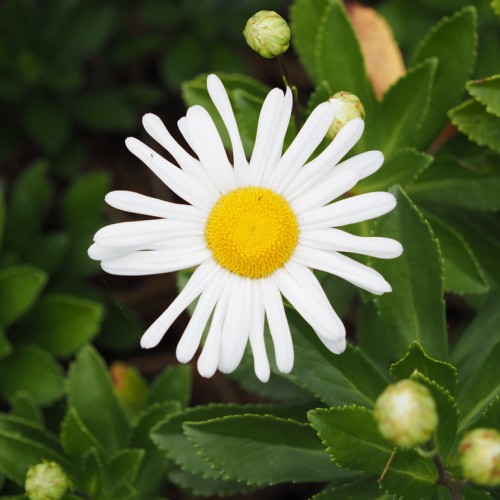
shasta daisy
Leucanthemum superbum 'Brightside'
Cycle:
Herbaceous Perennial
Watering:
Minimum
Hardiness Zone:
5 - 9
Flowers:
Flowers
Sun:
Full sun
Leaf:
Yes
Growth Rate:
High
Maintenance:
Low
Care Level:
Medium
watering
Shasta daisies prefer even and consistent moisture throughout their growing season. During the summer months, water your Shasta daisy plants deeply but infrequently, allowing the soil to dry out a bit between waterings. Make sure to check the soil every few days for signs of dryness. When the top 1 to 2 inches of soil feels dry to the touch, water the plant until the soil is saturated. Once established, Shasta daisies don't need a lot of extra water beyond what's provided by rainfall. However, during hot summer weather, supplemental water may be necessary about once a week.
sunlight
Shasta daisies (Leucanthemum superbum 'Brightside') prefer full sunlight, and receive best flowering results when planted in spots that get 6 or more hours of direct, unfiltered sunlight per day. This can be from mid-morning until mid-afternoon in warmer climates, and from late morning until early evening in regions with cooler climates. In order to promote full blooms and healthy plants, Shasta daisies should have access to as much light as possible.
pruning
Shasta daisies should be pruned twice a year. In early spring after the last frost, remove any dead or diseased stems, and cut back spent foliage to encourage vigorous new growth. In late summer, cut back the spent flower stalks to promote new blooming. Don't prune more than half the leaves. Pruning is best done with clean, sharp shears and it's important to sanitize the tools between cuts to avoid spreading disease.
